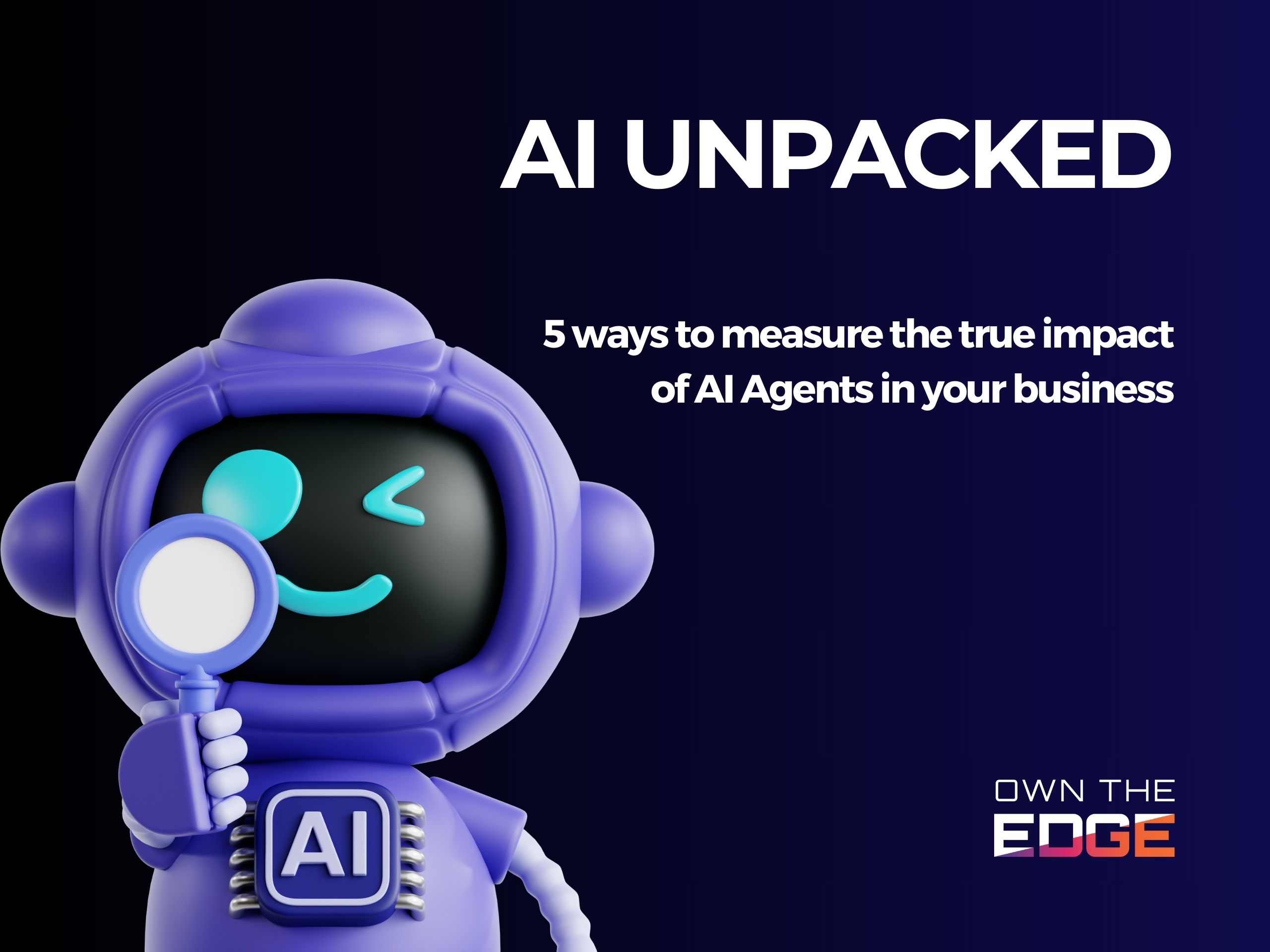As AI agents become a bigger part of how businesses operate, knowing how to measure their impact is key. In this article, we’ll dive into practical strategies to assess whether your AI agents are delivering real value and aligning with your goals.
Let’s break it down and make it actionable.
Spotting the wins: Key metrics for AI agent performance
To understand what your AI agents are doing for you, focus on metrics that matter to your business.
Here’s what to look at:
- Operational efficiency: Are processes faster and more accurate? Track things like how long tasks take or how often mistakes happen. A drop in completion times or error rates can show you’re on the right track.
- Cost savings: Look at whether AI is cutting operational costs. Compare what you’re spending on labor or resources before and after bringing in AI agents. Even small savings can add up fast.
- Revenue growth: Are your AI efforts driving more sales or opening new revenue streams? Keep an eye on sales figures or new business opportunities that pop up thanks to AI.
- Customer satisfaction: Check in on customer feedback, retention rates, and Net Promoter Scores (NPS). Happy customers are a clear sign that your AI agents are making a difference.
- Employee productivity: Notice if your team has more time for high-value work. Are employees less bogged down by routine tasks? That’s a win worth measuring.
These metrics aren’t just numbers, they’re your guide to seeing where AI is making an impact.
Real-world proof: AI agents in action
Plenty of businesses are already seeing results. Here’s how some big names are using AI agents to drive change:
- Verizon: They brought in a Google AI assistant to back up their customer service reps. The result? Nearly 40% more sales and shorter call times. It’s a game-changer for efficiency and revenue. (Source: Reuters)
- Deloitte: Their in-house AI chatbot, PairD, is helping auditors crunch data faster and smarter. It’s boosting efficiency and giving teams more time to focus on strategy. (Source: Financial News London)
- Procter & Gamble: In a big experiment, professionals using AI tools matched human teams and, in some cases, outperformed them. Teams with AI reported better results and even felt less stressed. (Source: Business Insider)
These examples show AI agents aren’t just hype; they’re delivering measurable results.
How to measure ROI: a step-by-step plan
Want to know if your AI investment is paying off? Follow these steps to evaluate your AI agents’ ROI:
- Set clear goals: Decide what you want to achieve. Maybe it’s faster customer responses or quicker data processing. Be specific so you know what success looks like.
- Establish baselines: Document how things are now – your current speeds, costs, and satisfaction levels. This gives you a starting point to measure against later.
- Run pilot programs: Start small. Test your AI agents in one area, like customer support or data analysis, and see how they perform. Gather feedback and early results.
- Dive into the data: Use analytics tools to compare before-and-after metrics. Are you seeing improvements in efficiency, costs, or customer happiness? Let the numbers guide you.
- Refine and scale: Use what you learn to tweak your AI agents. If they’re working well, think about rolling them out more broadly. If not, adjust and try again.
This structured approach takes the guesswork out of measuring success.
Why it matters: Unlocking AI’s full potential
Measuring your AI agents’ impact isn’t just about ticking boxes, it’s about making sure they’re driving real value for your business. By focusing on the right metrics and following a clear evaluation process, you can validate their effectiveness and plan smarter investments for the future.
Getting started: Your next steps with AI
If you’re ready to bring AI into your business or refine what you’re already doing, start by mapping your current processes to spot repetitive tasks like data entry or customer inquiries that could be automated. Focus on quick wins where small changes can lead to faster results, and get your team involved to align priorities and build support.
Then, evaluate your technology and data. Ensure your systems can handle AI integration and that you have the data needed to generate insights. Set clear, simple goals such as improving workflow speed or customer feedback, and use these as the basis for measuring success down the line.
Curious about what AI Agents could do for your business? Let’s chat — or better yet, let’s build a free proof of concept to show you what’s possible.


